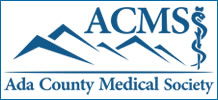Benign Prostatic Hyperplasia (Prostatic Enlargement)
Benign Prostatic Hyperplasia (BPH) is the non-cancerous enlargement of the prostate that most men will face as they age. The prostate gland encircles the urethra and produces a fluid that makes up most of the volume of the semen. As the prostate increases in size, it can put pressure on the urethra that may cause many symptoms such as slowing of the urinary stream, feeling of incomplete emptying of the bladder, trouble starting a urine stream, stopping and starting several times during urination, and urinating often, especially at night. It can also cause urinary retention – blockage that results in the inability to urinate.
BPH symptoms may vary from person to person and may change over time. For some, BPH never progresses beyond mild to moderate symptoms that are somewhat annoying. Some men may choose to do nothing and pursue a “watchful waiting” course of action, while others may find relief with prescription medications and/or lifestyle changes. Yet for others with more severe symptoms that have a greater impact on their quality of life and well-being, surgical treatment may be an option.
Complications from BPH may include:
- bladder or kidney infection
- weakened bladder
- hematuria (blood in the urine)
- renal failure
- bladder stones
Diagnosing BPH
A diagnosis of BPH involves a physical exam, a digital rectal examination (DRE) and an evaluation of the patient’s symptoms.
Laboratory tests may include:
- Prostate specific antigen (PSA) to help screen for prostate cancer.
- Urinalysis and culture to rule out kidney disorders and urinary tract infections.
- Blood urea nitrogen (BUN) and creatinine blood tests to evaluate kidney function, which may be compromised if the prostate is causing urinary obstruction.
Diagnostic tests may include:
- Bladder and prostate ultrasound to measure the size of the prostate and determine the amount of urine retained in the bladder.
- Cystoscopy to evaluate the urethra and bladder with a small flexible scope.
- Prostate biopsy to rule out prostate cancer.
Treatment Options for BPH
Treatment choices will also vary from patient to patient. Your physician will discuss the pros and cons of each treatment option and will help you decide which course of treatment will provide the most optimal benefit based on your symptoms.
Lifestyle Changes/Behavioral Therapy
May include reducing fluid intake in the evening and removing bladder irritants from your diet.
Medications for those with moderate symptoms
- Alpha blockers relax the muscles around the prostate and bladder neck and usually begin to provide relief quite quickly.
- 5-alpha reductase inhibitors shrink the prostate gland in men whose prostate volume is over 40 cc. These medications may take months to work.
- Anticholinergics are used to delay the urge to urinate and inhibit involuntary bladder contractions.
Minimally Invasive Therapies
- UroLift Procedure – prostatic urethral walls are “tented” open, done as an outpatient procedure. http://www.idurology.com/urolift/
Surgical Treatments
- Transurethral resection of the prostate (TURP) is a procedure to remove tissue from the prostate. During TURP, a very thin lighted tube with a cutting tool at the end is inserted through the urethra. Prostatic tissue that is causing blockage is cut away and removed. This procedure is frequently used to treat moderate to severe BPH. Depending upon the situation, this may be an outpatient procedure or may require an overnight stay.
- Transurethral incision of the prostate (TUIP) uses special cutting instruments inserted through the urethra. TUIP differs from TURP in that no prostate tissue is removed. Instead, one or two small cuts or grooves are made into the prostate gland where your prostate meets your bladder. The cuts cause the urethra to expand, thereby making it easier to urinate. Depending upon the situation, this may be an outpatient procedure or may require an overnight stay.
- Open prostatectomy is usually done for those who have a greatly enlarged prostate gland, bladder damage or other complicating factors, such as bladder stones or urethral narrowing. This is an inpatient surgery.








